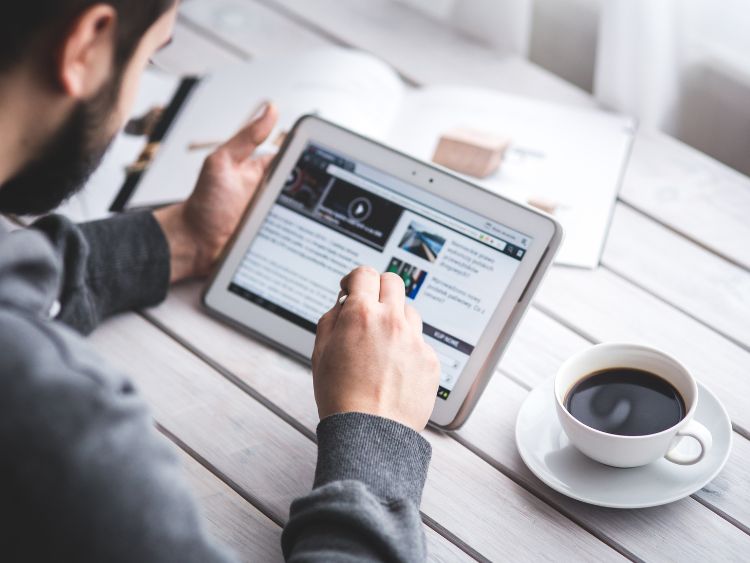When it comes to dressing for work, navigating the balance between formal and casual can be tricky for men. Enter the world of business casual—a dress code that combines professional polish with comfort and style. Business casual has become the go-to attire for many modern workplaces, but what does it actually entail? What separates it from more formal office wear, and how can men put together sharp, versatile outfits without overdoing it? In this article, we’ll break down the essentials of business casual for men, helping you master this flexible yet polished look.
What is Business Casual for Men?
Business casual is a dress code that sits comfortably between formal business attire (think suits and ties) and everyday casual clothing (jeans and t-shirts). It’s designed to allow men to look professional without being overdressed. But here’s the thing—business casual doesn’t have a one-size-fits-all definition. Different companies have different expectations, and what’s considered “casual” in one office may be too laid-back for another.
So, how do you know you’re getting it right? Stick to the basics: tailored pants, collared shirts, and clean shoes. From there, you can adjust depending on the formality of your workplace. But first, let’s dive into the key elements of a business casual wardrobe.
Essential Pieces for Business Casual Men
Building a versatile business casual wardrobe starts with understanding the key items that form the foundation of this style. Here’s a breakdown of the must-haves:
1. Dress Shirts
- A well-fitted collared shirt is the cornerstone of any business casual outfit.
- Opt for button-down shirts in neutral colors like white, light blue, or pastel shades.
- Avoid flashy patterns—keep it simple and classy.
2. Polo Shirts
- Polos are an excellent alternative to dress shirts, especially in warmer weather.
- Stick to solid colors or subtle patterns to keep the look professional.
3. Blazers and Sports Jackets
- While full suits are not necessary, a well-fitted blazer or sports jacket adds a polished touch.
- Navy and gray are versatile options that can be paired with multiple outfits.
4. Chinos or Dress Pants
- Forget about jeans—chinos or dress pants are your go-to for business casual.
- Opt for neutral shades like khaki, gray, or navy for maximum versatility.
5. Leather Shoes
- Polished loafers, brogues, or oxfords are great choices for business casual footwear.
- Black and brown are the most versatile colors.
6. Belts and Accessories
- A leather belt should match the color of your shoes for a cohesive look.
- Accessories like watches or simple cufflinks can elevate your outfit without overdoing it.
How to Mix and Match: Creating a Business Casual Wardrobe
You don’t need to fill your closet with tons of clothing to nail business casual. With a few versatile pieces, you can create numerous outfits. Let’s explore a few mix-and-match ideas that can keep your look fresh without breaking the bank.
Example Outfit 1: Classic and Simple
- White dress shirt
- Navy chinos
- Brown leather loafers
- Navy blazer
Example Outfit 2: Casual Friday Vibes
- Light blue polo shirt
- Khaki chinos
- Brown brogues
Example Outfit 3: Transitional Day-to-Night
- Light gray dress shirt
- Black dress pants
- Black leather oxfords
- Charcoal sports jacket
The Do’s and Don’ts of Business Casual Men
Mastering business casual is all about striking the right balance. Here are some key do’s and don’ts to keep in mind when putting together your outfit:
Do:
- Invest in quality basics: A few well-made pieces will last you much longer and look more polished.
- Keep it simple: Avoid excessive patterns, colors, and accessories that can make your outfit feel too busy.
- Tailor your clothing: A good fit is everything. Even a simple shirt and pants look great when tailored to your frame.
Don’t:
- Wear jeans: Even on casual Fridays, opt for chinos or slacks.
- Over-accessorize: Less is more when it comes to business casual. A simple watch or belt will do the trick.
- Go too casual: Skip the sneakers, graphic t-shirts, and hoodies. You still want to look professional!
Why Business Casual Matters in the Workplace
You might wonder why business casual attire is such a big deal in the first place. Well, here’s the thing: your appearance speaks volumes before you even say a word. Dressing appropriately for the workplace shows respect for the environment, your colleagues, and yourself. It helps you project confidence, professionalism, and competence—qualities that are crucial in any work setting.
Moreover, business casual attire has the flexibility to adapt to different occasions. Whether you’re heading to a client meeting, an after-work event, or just another day at the office, a sharp business casual outfit can help you transition smoothly without missing a beat.
Business Casual for Different Work Environments
Different industries have varying interpretations of what business casual means. Here’s a quick breakdown to give you an idea of what might be expected in different settings:
Tech Companies
- Tech offices often lean toward the more casual side of business casual. You’ll see polo shirts, chinos, and even some dark-wash jeans with blazers.
Corporate Offices
- Corporate settings expect more traditional business casual attire. Stick to dress shirts, slacks, and sports jackets for a more polished appearance.
Creative Industries
- In creative environments, there’s more room for individuality. You can experiment with colors and patterns while maintaining a professional appearance.
Frequently Asked Questions (FAQs)
What are some good business casual outfit ideas for men?
Business casual outfits can range from a simple dress shirt and chinos to a more polished look with a blazer and dress shoes. Some safe options include a navy blazer paired with gray slacks or a crisp white shirt with khaki chinos.
Are jeans ever acceptable for business casual men?
Generally, jeans are considered too casual for business casual settings. However, in more relaxed environments, dark-wash, well-fitted jeans without any distressing can sometimes pass as appropriate. When in doubt, stick to chinos or slacks.
What kind of shoes are appropriate for business casual?
Leather shoes like loafers, brogues, or oxfords are perfect for business casual outfits. Avoid sneakers, sandals, or anything too casual.
Can I wear a tie with business casual?
While ties are not typically required for business casual, you can wear one if you prefer a more formal touch. Just ensure it complements the rest of your outfit and doesn’t feel out of place.
Is a polo shirt appropriate for business casual?
Yes, polo shirts are a great option for warmer months or casual Fridays. Just ensure they’re in solid colors or subtle patterns to maintain a professional look.
Conclusion
Business casual for men doesn’t have to be complicated. With a few versatile staples and a clear understanding of your office’s expectations, you can easily put together sharp, professional outfits that strike the perfect balance between formal and relaxed. Remember, the key to mastering business casual is all about looking polished without being overly formal. So, invest in some quality basics, mix and match your wardrobe, and you’ll be good to go!


